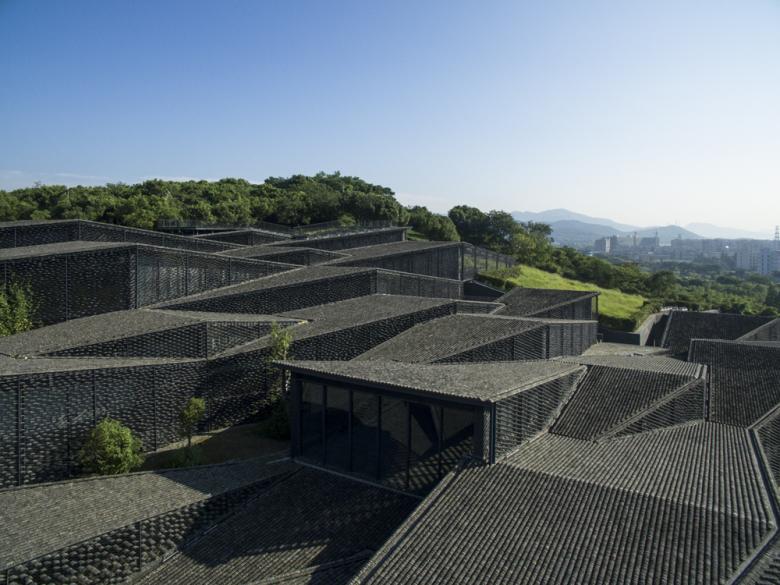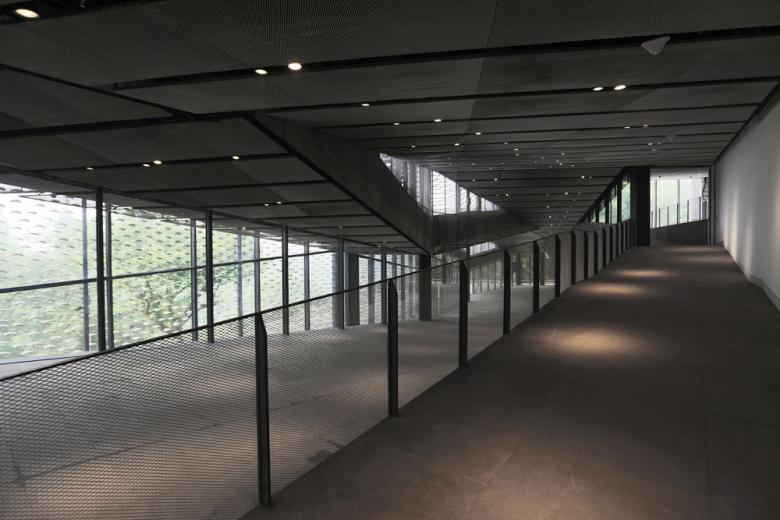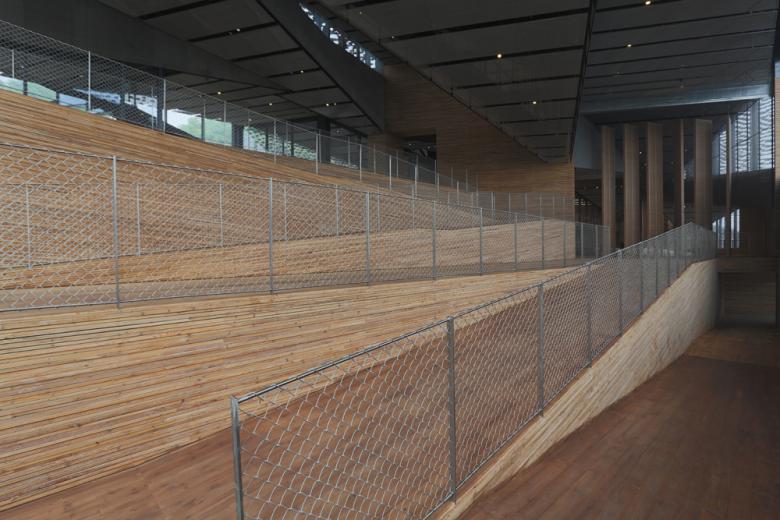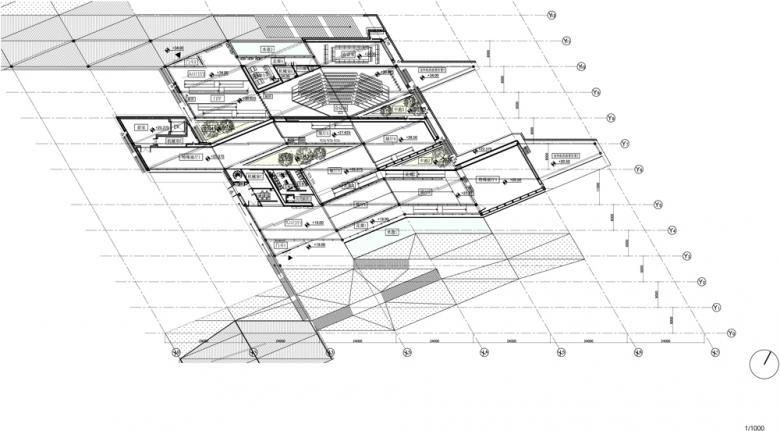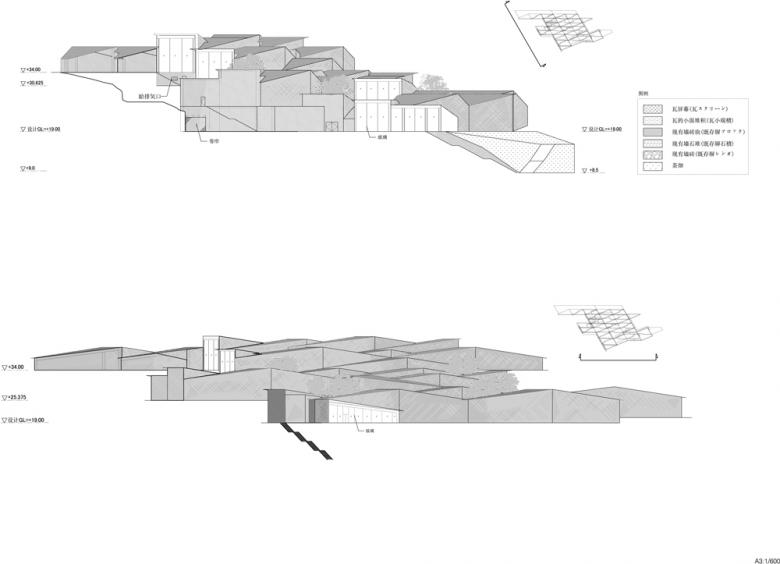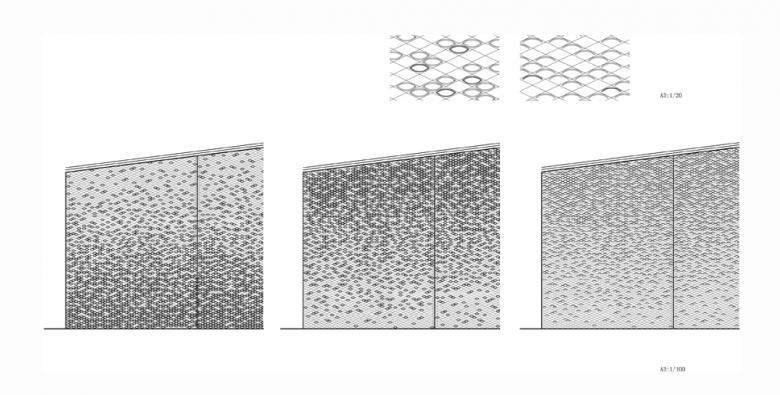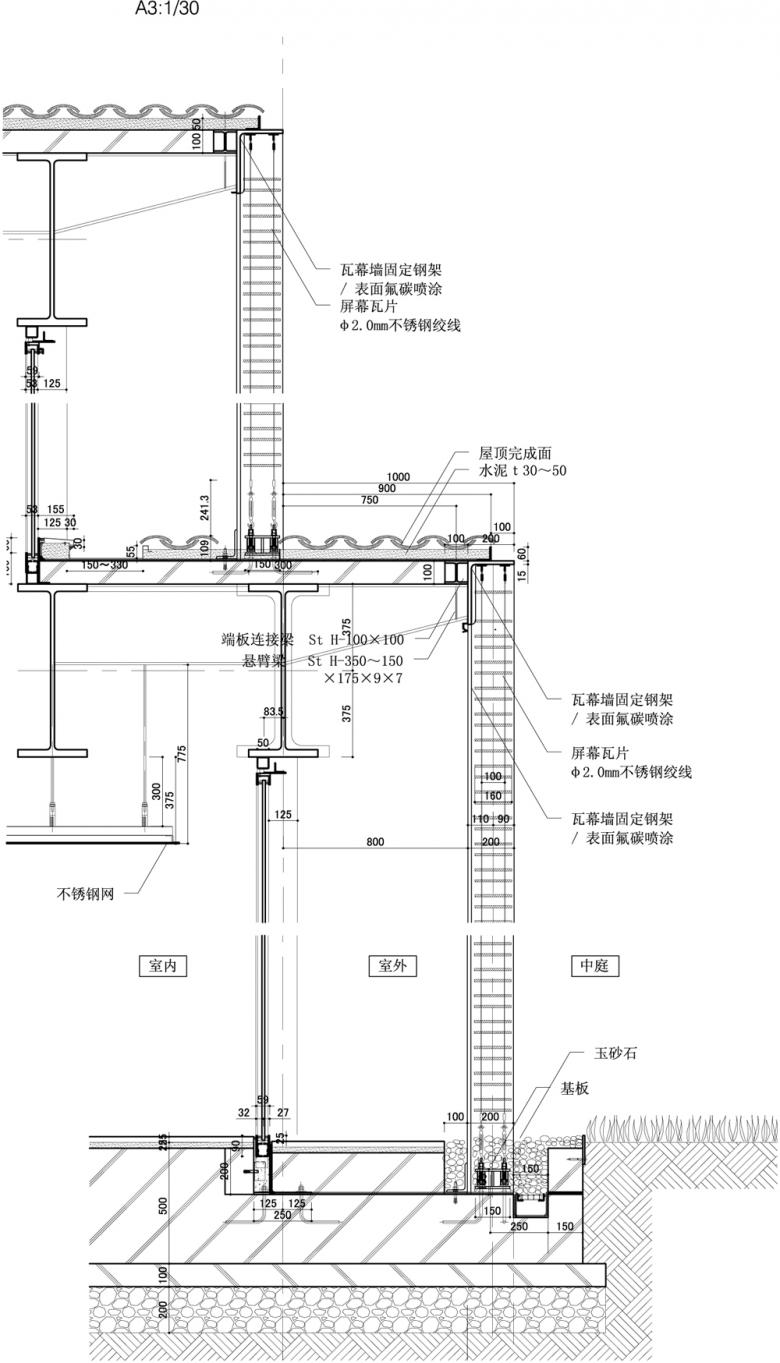Layers on the hill
Layers on the hill
6. abril 2016
Text by Eduard Kögel
The new Folk Art Museum designed by Kengo Kuma & Associates is part of the China Academy of Arts in Hangzhou. The museum building is terraced along the hilly site of a former tea plantation. The permeable layers of its façade stretch like a spiderweb along the hill; the effect of a fine aesthetic and contemporary take on the traditional lattice of local vernacular architecture.
The city of Hangzhou in Zhejiang province is easily reached from Shanghai. Many tourists visit the famous West Lake and the historic remains of the ancient city. In 1928, the renowned educator Cai Yuanpei founded the China Academy of Arts (CAA) here, which today is still recognised as one of the leading art schools in the country. A few years ago the CAA was relocated to Xiangshan, a hilly area approximately fifteen kilometres southwest of the city centre. The new Xiangshan Campus consists of a series of buildings designed by Wang Shu and Lu Wenyu (amateur architecture), housing the School of Design, the School of Architecture, the Art Institute and the Media Institute among other facilities. In this environment of education for creative industries a collection and an exhibition space in the new Folk Art Museum helps teaching the development of art and design.
Architects Kengo Kuma & Associates employed a geometric grid-layout of parallelograms to overcome the natural fifteen meters drop across the site. The internal ramps and stairways that connect the various levels also serve as exhibition space and allow views with wide-ranging orientations into the surrounding landscape. Each parallelogram is individually articulated with a sloping roof clad with historic ‘monk-nun-tiles’. This creates a zigzag roofline, which abstractly evokes regional village architecture. The outer layer of the façade comprises a stainless steal screen with the same traditional tiles inserted into the diagonal mesh, acting as shading device for the glazed inner layer.
These screen and roof tiles were salvaged from demolished village buildings nearby, as Wang Shu and Lu Wenyu did for the buildings of the above-mentioned institutes some years previously. Thus the new museum fits well within the wider environment of the campus. The particular size of the tiles and the traces of time shown on the material, cause the museum to immediately merge into its surroundings, thereby becoming a fine backdrop for displaying the artefacts of folk arts. Furthermore, the re-used tiles readily associate to the local folk tradition and themselves act as the first natural artefact for the collection.
The planometric arrangement of parallelograms allowed the insertion of open-air courtyards, which integrate topography into the building and offer many views to the neighbouring landscape. The modular composition accommodates distinct functions, such as the auditorium, exhibition space and secondary rooms. The visually permeable façade creates the opposite of the ‘white box’ museum, which will present a challenge for the future exhibitions, as they will always have to consider the natural surroundings and their impact on the exhibition content. However, the museum is itself a contemporary reference to folk art, illustrating a particular approach to using the given cultural heritage for imaginative new creations.
Site Plan
Ground plan
Frame
Isometric projection
Section
Section
Screen
Detail
China Academy of Arts’ Folk Art Museum
China Academy of Arts
Konishi Structural Engineers
P.T. Morimura & Associates
11,279 m2
4,970 m2
April 2009 to April 2011
January 2013 to September 2015
concrete encased steel beam/column
Eiichi Kano
